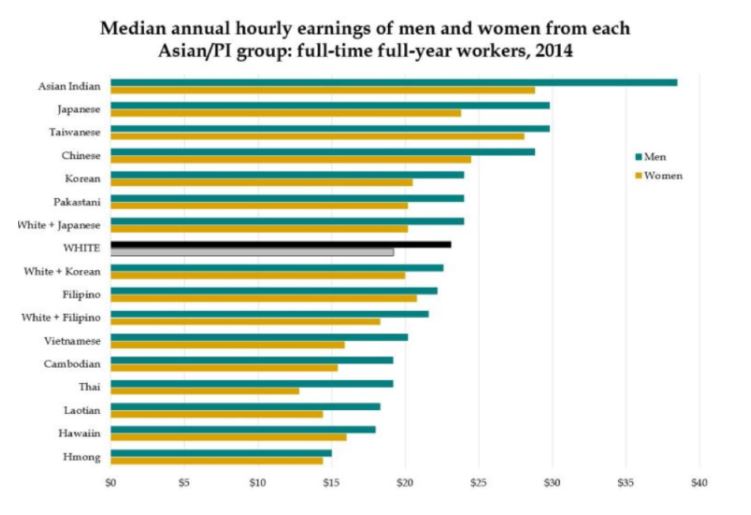By Aber John Espinoza, CAUSE Leadership Academy
The 2020 Census presents an important opportunity for Asian/Pacific Islander American (A/PIA) communities to make themselves and their needs known to the federal government.
Now more than ever, it is critical that the United States government not only addresses the needs of our individual communities, but also collects and studies properly disaggregated data to account for the diversity of experiences within the A/PIA coalition.
In a time plagued by disease and a stifled economy, we must encourage completion of the Census to ensure that the most vulnerable and forgotten members of the A/PIA coalition are given appropriate support. The cycle can only begin by encouraging members of our community to complete the Census and make sure they are heard in the first place. (Note: Deadline is September 30)
The Rise of Asian Americans, an article published by the Pew Research Center in 2013, details the experiences of A/PIAs in various categories, such as income, education, religion, and marriage. This report generally paints a rosy picture of A/PIA achievement with robust data on the six most populous ethnic groups within the A/PIA community: Indian, Chinese, Vietnamese, Filipino, Korean, and Japanese.
However, this report from the Pew Research Center fails to provide data on groups other than the six most populous ethnic groups in the US. Failure to provide data on these groups – many of whom have immigration, education, and employment experiences that are markedly different than the aforementioned ethnic groups – creates roadblocks to properly utilizing data to help the entirety of the A/PIA coalition. A 2016 article from Family Inequality on Asian American expands on these differences and illustrates important disparities in A/PIA income. Using disaggregated income data from the 2014 American Community Survey, the graphic below reveals differences in annual hourly earnings by gender and ethnicity:

The differences between groups are quite drastic and swiftly dismantle any notions of a monolithic racial group. The relative invisibility of low-income A/PIA communities from the collective American consciousness is the first of many reasons why accurate completion of the Census and the assurance of government aid are important to A/PIA communities across the country. Without disaggregated data from the Census, A/PIA communities could potentially fall victim to gross overgeneralization.
The Census takes on personal significance to me as an A/PIA residing in the Midwest. A 2019 NBC News article cites that the Midwest has shown increasingly high rates of A/PIA growth in the past decade. This massive growth can be attributed to increased refugee resettlement in the region within the last decades, comprised mainly of “those of Hmong, Cambodian, Laotian, and Vietnamese descent.” The article additionally states that Iowa and Nebraska received nearly $13 billion in 2016 through federal programs such as Medicaid and food stamps, with 1 in 5 Asian families in both states falling below the poverty line.
Communities such as these struggle with visibility on two fronts: immediate stereotyping as a model minority who are thriving rather than surviving, and neglect by way of their geographic location away from robust enclaves. An inaccurate Census count risks the inability to improperly disaggregate data on the A/PIA community and identify important needs within various ethnic communities.
Convincing large segments of the A/PIA community to participate in the Census will certainly be challenging, and this does not just apply to older generations of A/PIAs who may feel jaded with their relevance to American politics or even suspicious of the federal government’s possession of their data.
As my other cohort members have noted, feelings of political ambivalence are common among first-generation A/PIAs, and these are feelings that are not easily confronted.
However, without an accurate count, communities within our coalition will ultimately suffer, and subsequent attempts to assist segments of the A/PIA coalition will be moot without data that can be properly disaggregated.
In the face of this urgency, I personally find excitement in what the future holds as regions of overlooked A/PIAs across the country begin to make their voices heard – this new energy among Midwestern A/PIAs is precisely why I joined the CLA program in the first place.
With the current Census and the upcoming election, I hope that this year can be the next chapter wherein A/PIAs around the country will mobilize for and with one another.
Nico Santos once said that, “Rising tides lift all boats,” so let us give respect to those whose boats are still struggling to stay afloat.
(About the author: Aber John Espinoza participated in a six-week internship program for college undergraduates- the CAUSE Leadership Academy)
AsAmNews has Asian America in its heart. We’re an all-volunteer effort of dedicated staff and interns. Check out our new Instagram account. Go to our Twitter feed and Facebook page for more content. Please consider interning, joining our staff, or submitting a story.

